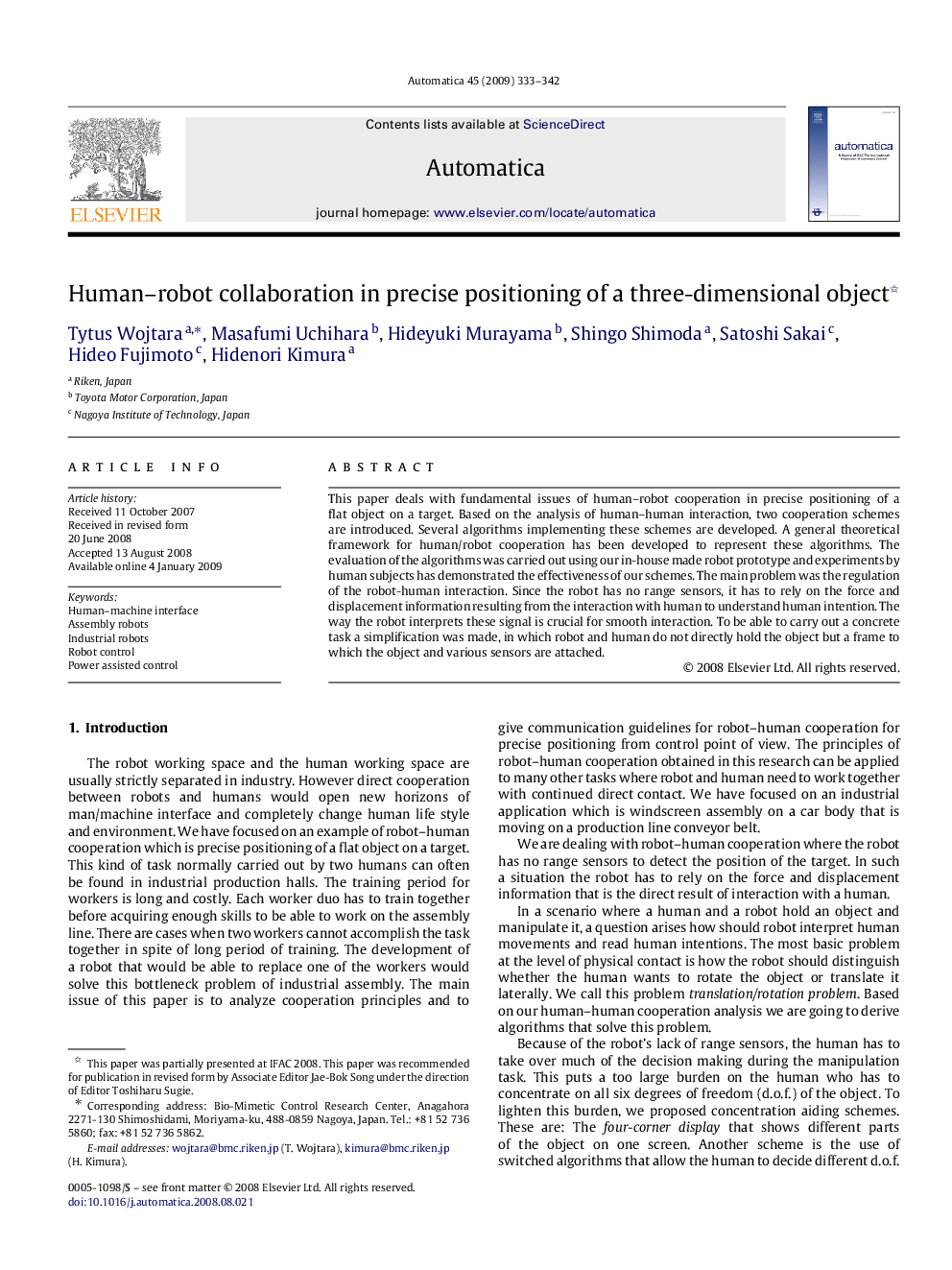| Article ID | Journal | Published Year | Pages | File Type |
|---|---|---|---|---|
| 697643 | Automatica | 2009 | 10 Pages |
This paper deals with fundamental issues of human–robot cooperation in precise positioning of a flat object on a target. Based on the analysis of human–human interaction, two cooperation schemes are introduced. Several algorithms implementing these schemes are developed. A general theoretical framework for human/robot cooperation has been developed to represent these algorithms. The evaluation of the algorithms was carried out using our in-house made robot prototype and experiments by human subjects has demonstrated the effectiveness of our schemes. The main problem was the regulation of the robot-human interaction. Since the robot has no range sensors, it has to rely on the force and displacement information resulting from the interaction with human to understand human intention. The way the robot interprets these signal is crucial for smooth interaction. To be able to carry out a concrete task a simplification was made, in which robot and human do not directly hold the object but a frame to which the object and various sensors are attached.
